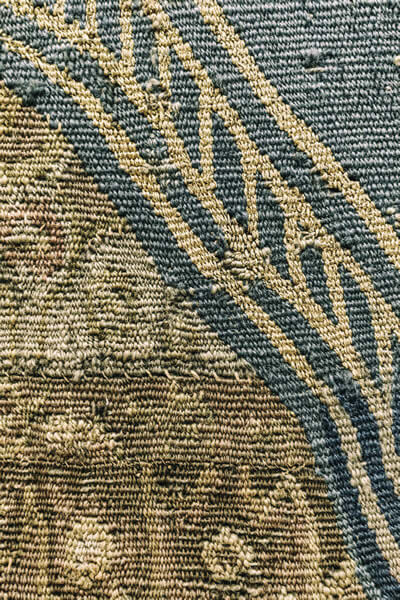Wondering how to care for your wall tapestry? We absolutely love transforming a space with a beautiful new tapestry, so every day we hand-pick new ethically made, high-quality coverings to add to our selection for you.
It means we have some answers about how to clean your wall hanging without specialized products.
It takes a bit of time, but with the recommendations outlined in this piece of content, the tapestry that has been your baby since your dorm days should be good as new.
Once you've hung up a wall tapestry, it should not require much in the way of maintenance. That said, everything has to be cleaned sometimes. But what process should you use?
The first thing you should do is gently brush any dirt off the tapestry. You can do this with a soft-bristled paintbrush. You can also vacuum it with your upholstery vacuum attachment.
If there is any caked-on dirt, of course, you'll need to rub a little harder.
You can also try loosening the dirt by cleaning it with some cold water and a washcloth, but be sure the fabric dye doesn't run if you are cleaning in this way.
It would be easy to end up with a dripping, color-running mess if you are not careful.
You can also try to spot-clean one spot on your wall hanging at a time, but it's best to test your cleaning method on an inconspicuous corner of the wall tapestry.
Here at Leafy Souls our mission is to make beautiful, ethical fashion as simple as possible. So let's see how we can help you.
Hey new friend! To say thanks for visiting Leafy Souls and supporting our mission, here's a gift of $5 off any purchase on our site. We have over 500 stylish, high-quality and 100% vegan products. So what are you waiting for? Just use 'WELCOME5' at check-out and view our beautiful collection here!
Can You Wash a Wall Tapestry?

Yes, but never use bleach on your tapestry. The colors of tapestry wall art will be destroyed by anything that contains bleach.
You can also try taking your tapestry in for dry cleaning, though doing this frequently can damage the surface of the material.
Alternatively, seek out professional tapestry or rug cleaners - sometimes expert advice is needed.
If your tapestry isn't made of finicky material, you might have success cleaning it in a washing machine.
Printed cotton wall tapestries, like an easy-care table cloth, can often be washed without any harm to the design or color.
Check the care instructions image if the piece came with one. Generally speaking, you'll want to use the "gentle" and "cold wash" categories on your washing machine.
Be sparing with detergent, or use a gentle one. On no account should you wash on hot. Leave your clothing out of the machine when you're attempting this, as well.
Otherwise, having other things in the washer with wall tapestries can cause them to pill or degrade if the fabric is delicate.
How to Remove Creases & Wrinkles
If your tapestry has been in storage or transit for any length of time, it may have developed a crease or two. You might have a question about how to flatten it smooth again.
There are several different ways to deal with tapestry creases. These are usually resolved when you lay out the tapestry or when you hang it.
Try lying it flat with an old sheet or tablecloth on top (to protect it from dust, or your cat, for example) and some items on top of the sheet to weigh it down. In a few days, your wall tapestry should be flattened.
You can try to steam iron the tapestry on low to medium heat. If you do this, use a press cloth between the iron and the back of the tapestry.
Here are some tips:
Excessive moisture can cause dyes to run or otherwise damage your wall tapestry or hanging, so be careful.
Where Should I Hang My Tapestry?
Of owning a tapestry is that you understand how to appreciate its beauty.
Try hanging tapestries on any walls in any room in your home that you access regularly.
You can hang them easily on any wall using brackets and rods.
You'll need to sew a rod pocket onto your tapestry if it does not already have one or use curtain rings with clips.
I'd avoid hanging a wall tapestry in the kitchen, as it may start to absorb odors and grease in that area.
You probably want to avoid positioning a wall tapestry near a window that gets a lot of sunlight, as direct sunlight will fade the colors over time.
Excessive heat can also be a problem. It shouldn't be too hard to search for such a location to install your hanging rod.

Choose walls in a room in your home where you can share it with people who will be able to experience the beauty of the wall tapestry.
You can also display it on the ceiling or behind the bed instead of a headboard. This looks particularly cool if your tapestry has tassels.
No matter which room you place your tapestries in, the members of your family will be able to enjoy and experience the tapestry art.
How to Deal With Fading
Tapestries may fade over time, but if you keep them out of direct sunlight, this may take a very long time. You might enjoy the look of a faded tapestry.
In essence, it adds character and can make the piece look like originals made by hand in India or other parts of the world.
Where to Buy Tapestries
Hopefully, this article has given you some details and tips to answer all your tapestry care questions.
If you have been on a search for the tapestry of a lifetime, check out all the the different categories of tapestry art, that Leafy Souls offers. You are sure to find one that brings your room together, no matter which room you decide to put it in!

